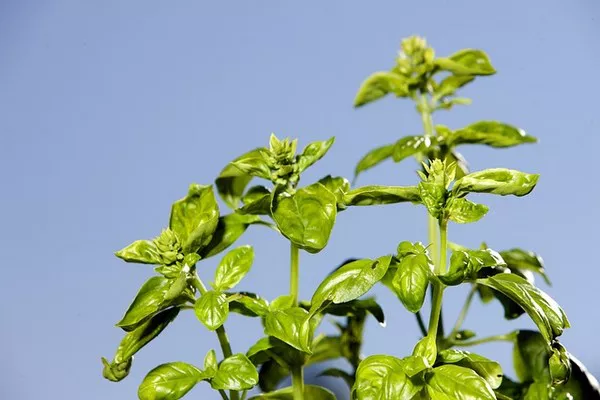Basil (Ocimum basilicum) is a popular culinary herb that not only adds a burst of flavor to various dishes but also possesses numerous health benefits. Cultivating basil at home is a rewarding experience, as it allows you to enjoy its fresh, aromatic leaves right from your garden or windowsill. However, to ensure the healthy growth and productivity of your basil plants, proper care and attention are essential. In this article, we will provide you with a comprehensive guide on how to care for basil plants, from planting to harvesting.
Choosing the Right Location:
Selecting the appropriate location for your basil plants is the foundation of successful cultivation. Basil thrives in warm and sunny conditions, so choose a spot that receives at least 6-8 hours of direct sunlight daily. If you’re growing basil indoors, place the pots near a south or west-facing window to provide them with ample sunlight. If outdoor gardening is your preference, make sure the chosen spot has well-draining soil and protection from strong winds.
Soil Preparation and Planting:
Well-draining soil is crucial for the health of basil plants. Choose a potting mix that allows excess water to drain away, preventing root rot. If planting in the ground, consider amending the soil with compost to improve its drainage and nutrient content.
When planting basil, ensure that the soil is warm, as basil is sensitive to cold temperatures. You can start basil from seeds or purchase young seedlings from a garden center. Sow the seeds about ¼ inch deep and space them 6-12 inches apart, depending on the variety. If transplanting seedlings, do so after the last frost date in your area, and space them accordingly.
Watering:
Proper watering is essential to prevent both underwatering and overwatering, which can lead to stress and diseases. Basil prefers consistently moist soil but not waterlogged conditions. Water the plants deeply when the top inch of soil feels dry to the touch. Always water at the base of the plant to avoid wetting the leaves, as moisture on the foliage can encourage fungal growth.
In hot and dry weather, basil may require more frequent watering. However, it’s important to strike a balance to prevent root rot. Using a mulch layer around the plants can help retain moisture and regulate soil temperature.
Fertilization:
To promote healthy growth and robust flavor, basil plants require adequate nutrients. Incorporate a balanced, slow-release fertilizer into the soil before planting or use a liquid fertilizer during the growing season. Avoid excessive nitrogen-rich fertilizers, as they can lead to excessive leaf growth at the expense of flavor.
Pruning and Pinching:
Regular pruning is a crucial aspect of basil plant care. Pinching off the top pair of leaves when the plant has developed three to four sets of leaves helps encourage bushier growth and prevents early flowering. Flowering can lead to reduced leaf production and diminished flavor. If you notice flowers starting to form, promptly remove them to redirect the plant’s energy towards leaf development.
Managing Pests and Diseases:
Like any plant, basil is susceptible to pests and diseases. Common pests that can affect basil include aphids, whiteflies, and spider mites. Regularly inspect your plants for any signs of infestation, such as discolored or distorted leaves. If you spot pests, consider using natural remedies like neem oil or insecticidal soap to control the infestation.
Fungal diseases such as downy mildew and powdery mildew can also affect basil, especially in humid conditions. To prevent these issues, provide adequate spacing between plants to promote air circulation and avoid overhead watering, which can wet the foliage. If necessary, apply a fungicidal spray following the manufacturer’s instructions.
Harvesting:
Harvesting basil leaves at the right time ensures optimal flavor and encourages continued growth. Wait until the plants have developed a substantial number of leaves before you start harvesting. Generally, you can begin harvesting once the plant has reached a height of 6-8 inches.
When harvesting, always choose the topmost leaves first, pinching them off just above a pair of leaves. Avoid removing more than one-third of the plant at a time, as this can stress the plant. Regular harvesting also prevents the basil from flowering too soon, ensuring prolonged leaf production.
Preserving Basil:
To enjoy basil’s flavor even beyond the growing season, consider preserving the leaves. One popular method is freezing basil leaves in ice cube trays with water or olive oil. You can also make basil pesto by blending the leaves with garlic, nuts, cheese, and olive oil. Another option is drying the leaves, either by air-drying or using a dehydrator.
Conclusion:
Caring for basil plants requires attention to detail and a commitment to providing the right conditions for growth. By selecting a sunny location, providing well-draining soil, and adhering to proper watering and pruning practices, you can ensure the health and productivity of your basil plants. With the right care, you’ll be rewarded with a bountiful harvest of aromatic leaves that can elevate your culinary creations and provide a touch of freshness to your meals.


